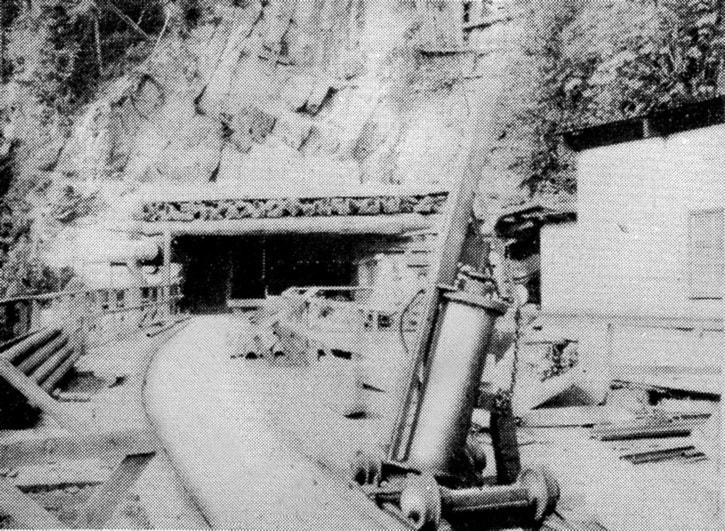Cowichan Copper
When we read of mine disasters occurring anywhere in the world, it is so good to recall that when we ourselves suffered a mini disaster at the copper mine in Jordan River, no lives were lost. It was early in the 1960s that there was a cave in and the waters of the Jordan River broke through the rocks into the tunnel and flooded Cowichan Copper’s Sunro mine.
The accompanying photo, published June 2, 1965 in the Grapevine (forerunner to The Mirror) was captioned: “Portal of main tunnel which has now been cleared for a distance of 4300 feet into mountain.” Note the two-foot gauge ore-carrying railway leading deep into the mine, which stands on the east side of the Jordan River, beyond the old hydro powerhouse. The underground mill room on two levels housed machinery, crushers, etc.
The Grapevine’s front page story continues: “The underground millsite is still full of debris, and it is expected that it will take a full three months to rehabilitate all the machinery and equipment … When the mill is in full production it will be treating 1500 tons of ore daily...“
Copper was first discovered there by George Winkler in 1915 and called Sunloch Mine, with copper extraction taking place in 1919 and 1920, under the ownership of Cominco. Operations were dormant or infrequent up until 1961, when Cowichan Copper took over, under the management of Ossie McDonald.
It was at this period that an influx of mining engineers and their families moved into Sooke. Many of them were following the mining circuit as mining operations went from Elliott Lake in Ontario to Brittannia Mines and to Cowichan Copper. The Jordan mining operations took place between 1961 and 1977, with intermittent breaks as the dropping price of copper, stock market speculations and onsite calamities occurred. Ore was transported via truck to Hach Point for shipping out by freighter.
While 40 some years have passed since the copper industry’s local heyday, and most of the mining specialists and their families that became part of our community are now gone, we have reminders amongst us still. Felderhof Road takes its name from mine surveyor Hans Felderhof. Many residents know the Chlopan family; their dad was mining engineer Joe Chlopan. A mining engineer still active in our community, Fred Chwojka, recalls that at its height, Cowichan Copper had a payroll of 128 men, on three shifts.
After the access tunnel caved in, early in 1977, the BC Ministry of Mines directed the installing of a plug near the portal. Current talk indicates the copper mine is under discussion once more.
Elida Peers,
Historian
Sooke Region Museum
